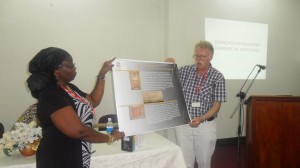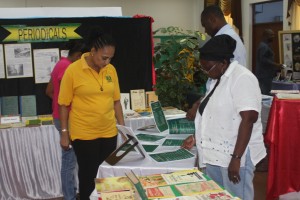
The Guyana Institute of Historical Research was founded to preserve and disseminate vital information on the history of Guyana, and to help with awareness of the importance of the country’s past.
GIHR was founded in July 11, 1994 and formally commissioned Sept. 1, 2000, when an application for registration under the Funeral and Burials Act was submitted. The signatories were GIHR Director Hazel Woolford, Tota Mangar, Arlene Munroe, Cecelia McAlmont and Dr. Melissa Ifill. It was registered on February 8, 2010 and is managed by a board of directors.
The institute was established with the aim of disseminating historical information, considered vital for researchers, historians, civil society, politicians, the electorate and those persons who need to be educated about the historical background of the politicians, political parties, as well as the local history of Guyana. It also promotes higher education for development through research.
It publishes a newsletter three times a year, and the GIHR Historical Journal. It also publishes works of reference, and undertakes a number of research projects.

The institute runs a research programme on labour, social, women and presidential history. It acts as a vehicle of exchanging information. GIHR concentrates on the main printed primary sources for modern history, in particular the history of Guyana and the Caribbean.
Public Events to Raise Awareness
As part of its public events programme, the institute holds exhibitions in observance of Amerindians, the arrival of Indian immigrants to Guyana, political independence and African emancipation. There is one public lecture during the year.
Additionally, GIHR holds an annual conference on the last Saturday in June, at which presentations are made by historians, academics, researchers and prominent civil society activists.
There is also the Montrose Academy, which is the junior division of the GIHR. It holds the annual ‘Kids Vacation History School’, a five-day school programme that introduces children to Guyana’s history. Children are exposed to history through online research. There are also exhibitions, child art and creative writing on history.
In an interview with Guyana Times Sunday Magazine, current director Hazel Woolford said the institute plays a pivotal role in the preservation and recording of Guyana’s history, which gives us an identity as a unified nation.
She also stated that GIHR will be offering a certificate in historical studies on September 30, with the aim of encouraging students to do more research on their history and build appreciation for it.
“There are still places, and students can apply online at hazelwoolford@gmail.com. The institute has also planned a one day workshop for History/ Social Studies teachers at NCERD. Teachers who are interested may contact me via email. The annual tea party and fashion show will be held on October 26 at the Critchlow Labour College. This year we will also feature the jewellery of UNESCO awardee Juliana Hughes. The models were trained by Negla Brandis and Sonia Noel. The tea plate is $1,000. There will be face painting, plant and a book exhibition,” she outlined.
GIHR successfully held its Sixth Annual Research Conference in June, under the theme, “The 1763 Berbice Revolution”. Woolford said this year’s theme signals the importance of preserving the country’s history.
“In 1763, psychologically, the slaves had successfully overcome abuse, neglect, shame and fear in their attempt to create a republic hemisphere. This is a major achievement and one we should never forget.”
The next notable event would be GIHR’s annual public lecture, to be held on November 28. The speaker is Eldon McRae, and the topic relates to the church and the 1823 Demerara rebellion.



